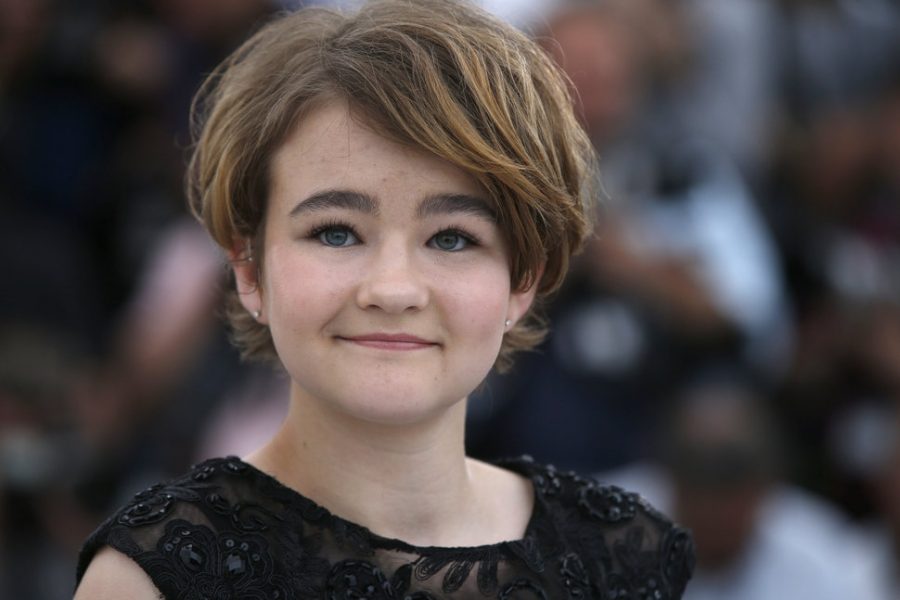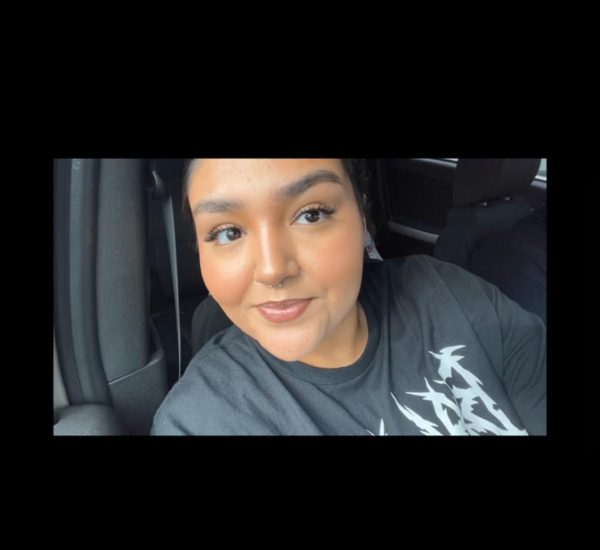Millicent Simmonds talks ‘A Quiet Place,’ being a deaf actress, more
April 3, 2018
Millicent Simmonds is proof you don't need to say a word to get someone's attention.
The 15-year-old deaf actress has earned praise in recent months, thanks to her impressive work in last fall's Todd Haynes film, "Wonderstruck," based on the acclaimed novel by Brian Selznick, and now in "A Quiet Place," an original, disturbing thriller hitting theaters Friday, April 6, starring Emily Blunt and John Krasinski (who also directed and co-wrote the screenplay).
"Quiet" gives us a whole new kind of monster to fear _ a gangly creature that hunts by sound. While on-screen newspaper headlines ("NYC on lockdown" and "Stay silent _ stay alive!") clue us into the apocalyptic horror, it's Simmonds' heartfelt performance that grounds the tale in human drama. She plays Regan, a deaf but otherwise typical, boundary-pushing teen, whose parents (real-life husband and wife Krasinski and Blunt) are trying to keep their family alive. And they all nurse guilt over a day where things went horribly wrong.
Key to their survival is the fact that the family (like Simmonds' own family back home in Bountiful, Utah) speaks American Sign Language (ASL). Simmonds, who lost her hearing as a baby, teaches ASL phrases on her own YouTube channel. She recently met with Newsday contributor Joseph V. Amodio, speaking and signing with interpreter Lynnette Taylor.
Q: Let me see if I can get this. Hello. How are you? My name is J-O-E and A-uhhh ... the "M" is a hard one.
A: Like this.
TAYLOR: Fold those three fingers over your thumb. Like that.
Q: Oh, OK. A-M-O-D-I-O.
A: Good job. I like it.
Q: That's all I know. Luckily, your interpreter can translate for us.
A: I had Lynnette on the "Wonderstruck" set and on "A Quiet Place." Lynnette knows me well. If I sign a little lazy, she'll fix it for me. And somehow she has a way to make people cry. She can bring out the emotions in what I'm saying. She's amazing. And she's helped me a lot in my personal life. So I'm very lucky to have her.
TAYLOR: I just said I love her. She loves me back.
Q: What was it like working with the monsters?
A: They showed us pictures of what the monsters would look like. We never saw the end result till we saw the film. During filming, a guy would act out the role . He had this little horn on his head _ it was kinda cute. We always giggled when we saw him. But sometimes John (Krasinski) would put on the green suit and act as the monster. He'd crawl around, growl. My first day (on set, he took me aside). We had a long, deep conversation about my character. That helped me a lot.
Q: How do you know when the director yells "Action" or "Cut?"
A: Sometimes the interpreter cues me. Or someone else. "Wonderstruck" used lights, or stomping on the floor. (She speaks.) It was cool.
Q: What's life like in Utah?
A: I'm from a really nice town. Full of nature, mountains, clean air, rock climbing. But I'd prefer New York City. I love the diversity here, the religions, the food _ especially the food.
Q: What's your favorite?
A: Chinese.
Q: Then you need to go to Chinatown.
A: Yes. I went. It'll change your life, eating there.
Q: So what are your plans? College? Reality show?
A: I'd love to continue acting. Maybe start a business. I'm just letting life lead me at the moment. I want to travel the world _ like Egypt. I love history. That's my favorite subject at school. From the building of the pyramids to ... King Tut. Their way of working without technology. I find all that fascinating.
Q: I heard you quote a statistic _ about 98 percent of hearing parents with deaf children don't learn sign language. That surprised me.
A: At my deaf school, kids ... who didn't (sign) with their parents often didn't want to go home. They'd end up writing notes to their parents and it was cumbersome. They weren't able to speak from the heart. I'm not trying to be critical of parents. I understand _ they're doing their best. We also had deaf children who could speak with their parents but not sign. As long as they understand each other, that's fine. I have no problem with how people communicate. But I think it's important ... for everyone to be open to learn sign language.
Q: Just trying to introduce myself before, it felt like choreography.
A: It uses your body, your face. It's a beautiful language.
Q: And your own parents?
A: They sign. We're very close. I can tell anything. They're very supportive, encouraging, and just think I can do it.
___
(c)2018 Newsday
Visit Newsday at www.newsday.com
Distributed by Tribune Content Agency, LLC.
_____
















